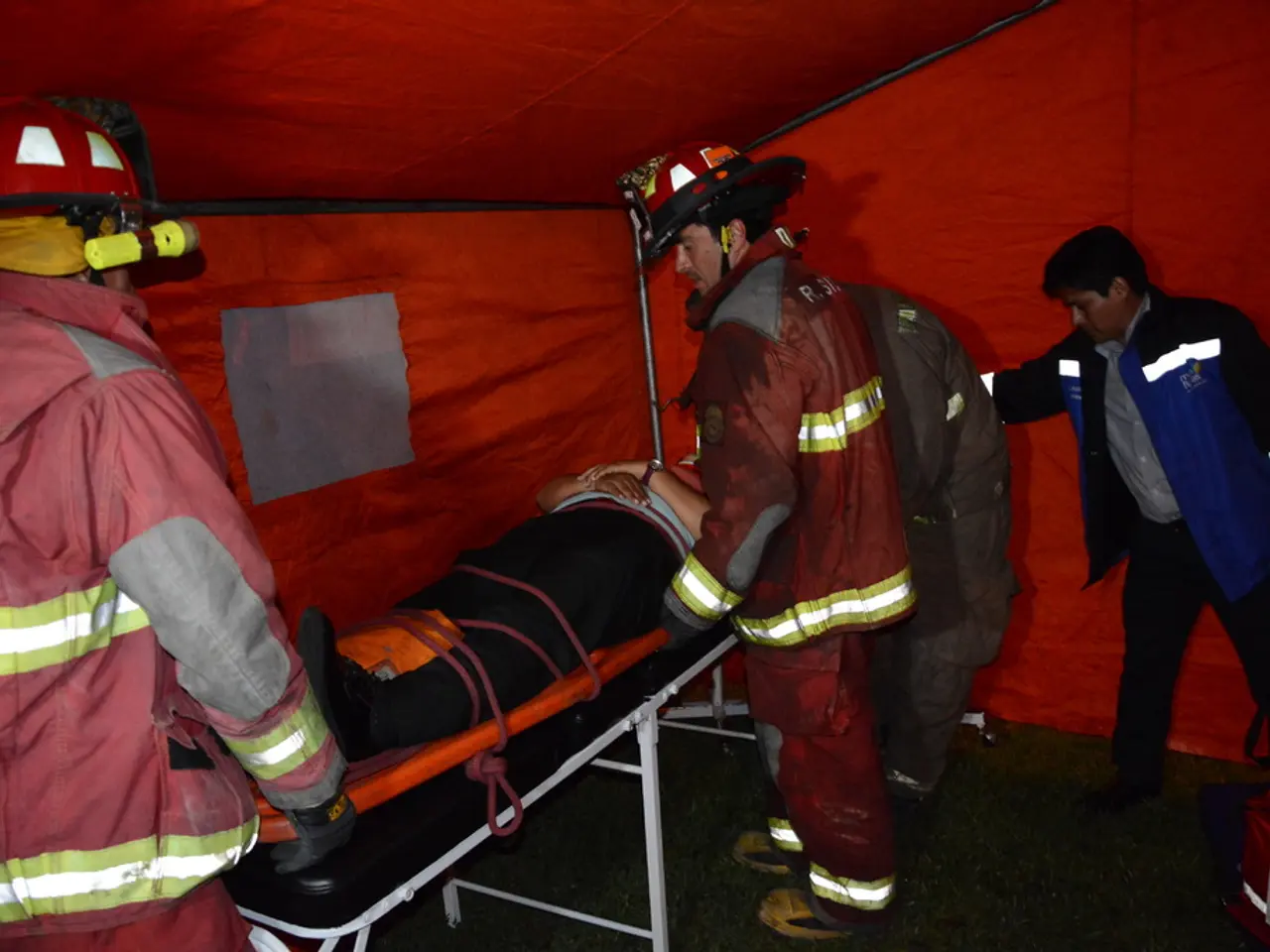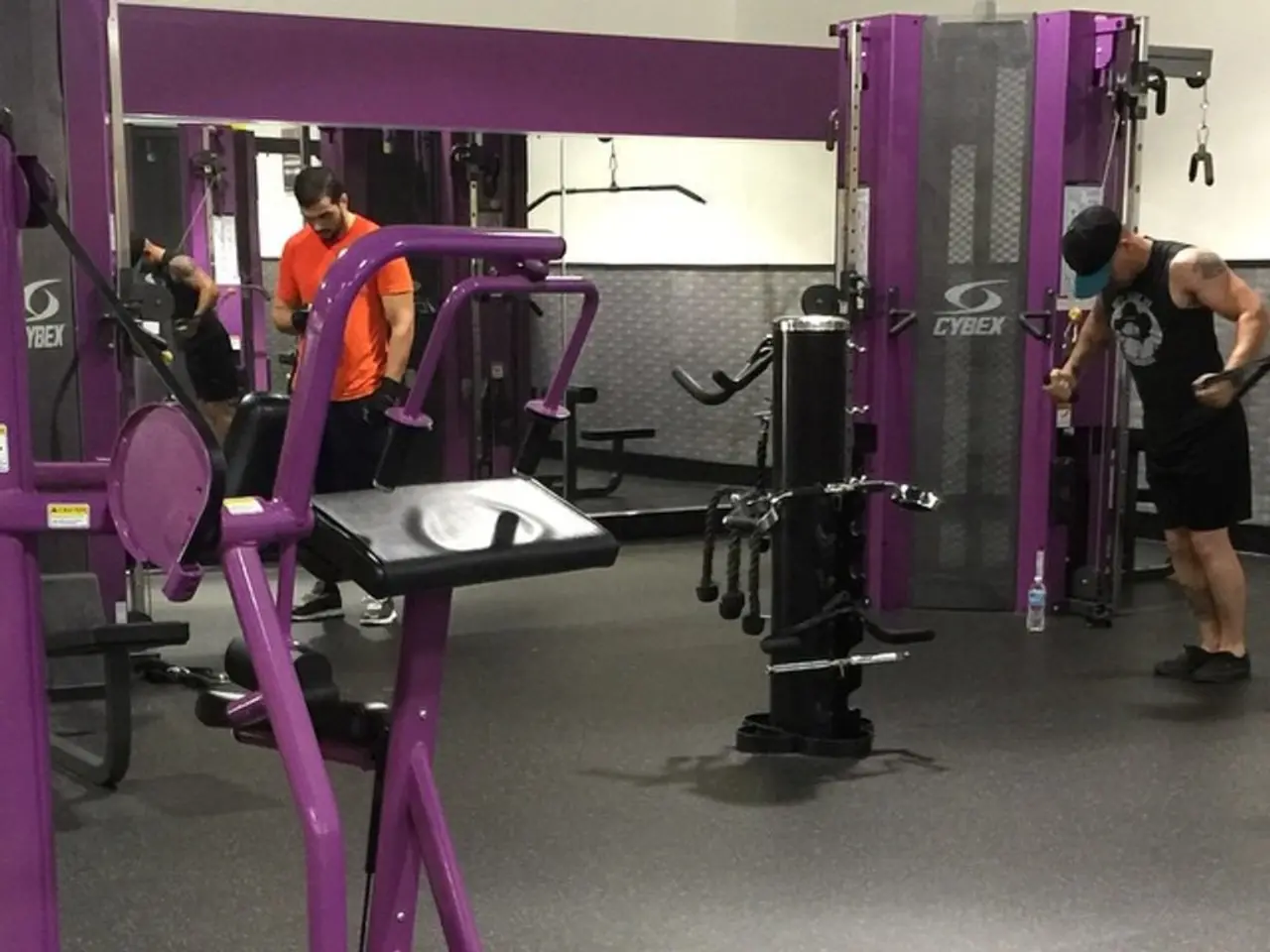Lifeguard Teamwork and Preparedness in Action: Resuscitating Individuals with Joint Ventilation Efforts
Mastering Essential Skills for a Lifeguard: Effective Ventilation in Drowning Cases
In the crucial role of a lifeguard, mastering skills like ventilation can be the difference between a tragic incident and a life saved. This article outlines the key steps for administering ventilations in a drowning situation, focusing on the number of ventilations, their pace, and the correct technique.
In an emergency, quick action is vital. In a drowning case, the primary concern is oxygen deprivation due to water in the lungs. To counteract this, five initial rescue breaths should be provided as soon as possible to deliver oxygen rapidly.
Following the initial breaths, the ratio for CPR cycles changes. When performing CPR alone, continue with 30 chest compressions followed by 2 rescue breaths for both adults and children. This 30:2 ratio ensures a balance between circulation and oxygenation.
For children, particularly when two rescuers are present, the ratio changes to 15 compressions followed by 2 breaths. This adjustment better meets the oxygen demand of younger victims.
The pace of each rescue breath is essential. Each breath should be delivered over about one second, just enough to make the chest visibly rise without overinflating the lungs and causing complications. For children, the ventilation rate is approximately 12 to 20 breaths per minute (roughly one breath every 3 to 5 seconds).
Maintaining a steady rhythm, good seal, and an open airway are crucial. The airway can be kept open by tilting the head back and lifting the chin properly, avoiding overextension for children.
The pace of chest compressions is equally important. They should be performed at a rate of 100 to 120 compressions per minute, allowing full chest recoil, with minimal interruptions to maintain blood flow.
| Age Group | Initial Ventilations | Compression-to-Ventilation Ratio (1 rescuer) | Compression-to-Ventilation Ratio (2 rescuers) | Ventilation Rate / Pacing | |-------------------|----------------------------|----------------------------------------------|-----------------------------------------------|----------------------------------| | Adults | 5 initial rescue breaths | 30:2 | N/A | 1 breath ~1 second after compressions | | Children & Infants | 5 initial rescue breaths | 30:2 | 15:2 | About 12–20 breaths/min (1 breath every 3–5 sec), 1 sec per breath |
This approach prioritizes early oxygen delivery in drowning cases, aligns with the traditional ABC sequence (Airway, Breathing, Compressions), and differs slightly from standard CAB CPR for cardiac arrest.
In high-stakes situations, working as a team with a fellow lifeguard is crucial. If the victim does not respond, it may indicate unconsciousness. As a lifeguard, the ability to give effective ventilations, also known as rescue breaths, is a critical skill in a drowning situation.
To open the victim's airway, use the tilt-chin-lift method, which forces the tongue out of the way and clears the airway. The number of ventilations per minute required can vary based on the age of the victim. Absence of breathing indicates the need for rescue breathing, with regular intervals and adequate puff quantities.
Regular practice is necessary to ensure the correct administration of ventilations. To check for a pulse, focus on the carotid artery, located between the trachea and neck muscles. An adult requires 12 to 20 ventilations per minute, while children and infants require between 15 and 30 ventilations per minute.
The presence or lack of a pulse can guide the course of action in a rescue situation. Sporadic breathing may hint at possible brain injury and requires a balanced and cautious approach. In emergency situations, being prepared and knowing key steps can make a significant difference.
Regular drills and continuous learning about new resuscitation techniques are crucial for all lifeguards. Checking the victim's responsiveness is the initial step in a rescue situation. Evaluating the victim's breathing is crucial. Regular, sporadic, or absent breathing can indicate different conditions. Regular breathing in an unconscious victim may require support, but not full-on rescue breathing.
In conclusion, mastering the art of ventilation is a vital skill for any lifeguard. Being prepared, knowing the correct techniques, and practicing regularly can ensure the best possible outcome in a drowning rescue situation.
Developing a strong foundation in health-and-wellness, particularly in understanding the importance of oxygen in the body, can aid a lifeguard in their role. This includes understanding the significance of fitness-and-exercise routines, which can boost a lifeguard's stamina and quick response during emergencies.
Furthermore, a well-rounded lifeguard should have knowledge beyond just water rescue. Demonstrating proficiency in sports, especially team sports, can enhance decision-making skills and the ability to work effectively as a team during high-pressure situations.




